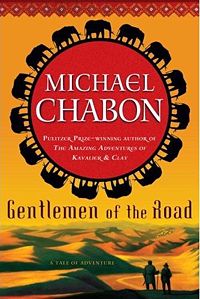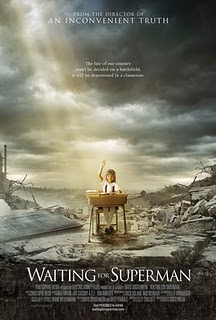Wonder what I've been up to this semester since my posting has been way down? I've been prepping a new class on film music. I cobbled together the following list for my students this morning as I realized I was jumping back and forth in time over the course of three class periods and I thought this timeline might help them. I thought you might find it interesting too.
1879 Eadweard Muybridge’s Zoopraxiscope allows the projection of a series of photographic slides giving the impression of movement.
1888-1892 Edison develops a motion picture camera which he calls the Kinetoscope
1892 Edison sets up the Black Maria motion picture studio in West Orange, NJ (closed in 1901)
1894 “Edison Kinetoscopic Record of a Sneeze” (aka “Fred Ott’s Sneeze”) is the earliest surviving copyright Edison film.
1894 The Holland Brothers open New York City’s first Kinetoscope parlor.
1895 Edison’s Kinetophone is introduced. It allowed single viewers to watch a film while simultaneously hearing a soundtrack recording. The synchronization was imperfect, and the machine did not find a market. A short Edison film from 1894 or 1895 shows two men dancing while another plays the violin into a phonograph horn (this is known as the Dickson Experimental Sound Film and you can see it and learn more about Edison’s early sound experiments by clicking on the hyperlink). The soundtrack, featuring music from the light opera The Chimes of Normandy by Jean Robert Planquette, was discovered on a broken wax cylinder in the 1990s and restored.
1895 In December, the Lumière brothers give their first public presentation, in Paris, of their Cinematographe. About 10 short films were shown, including Arrival of a Train at La Ciotat. It is believed that the films were provided with live musical accompaniment on the piano. This event is often considered to be the beginnings of the modern cinema.
1895-96 Several companies work on the development of their own versions of the motion picture projection camera. Edison premiered the Vitascope (which his lab produced for another company) in 1896; they switched to his own version called the Projectoscope or Projecting Kinetoscope.
1896 By this time, motion picture shows (usually a series of very short films) were regularly shown at Vaudeville theatres.
1890s-1920s There are numerous experiments synchronizing motion pictures and phonographs, in Europe and the United States, in this period. These systems are not commercially viable until the premiere of the Vitaphone system in the mid-1920s. There are also a variety of techniques using live actors, musicians, singers, and sound effects specialists to accompany film showings at some theatres. Most film showings probably featured some continuous musical accompaniment, by a pianist, organist, or a small band or orchestra.
1903 Edwin Porter, working for Edison’s production company, finishes what is considered the first American narrative film, The Great Train Robbery, initiating a sea change of American film production toward narrative film.
1905 The first nickelodeon theater opens in Pittsburgh, offering five or six short films, each one-reel long, for the admission price of a nickel.
1907 Lee De Forest patents the audion tube, a “thermenionic triode valve” that was a gas-filled tube with three filaments. It allowed a small electric signal to be amplified and played over loudspeakers.
1907 Eugene Augustin Lauste exhibits his Photocinematophone which was the first projector to use sound-on-film technology.
1908 Camille Saint-Saëns composes what is widely considered to be the first original movie score for the French Film d’Art production, L’Assassinat du Duc de Guise.
1909 Edison company sends out its “Kinetogram” newsletter featuring musical suggestions for 7 of its films, essentially the first cue sheets ever produced.
1909 Gregg A. Frelinger publishes his Motion Picture Piano Music: Descriptive Music to Fit the Action, Character, or Scene of Moving Pictures, a collection of 51 relatively easy pieces for piano.
1913 The first of the Sam Fox Moving Picture Music volumes is published, with musical cues for various moods and national-ethnic settings composed by J. S. Zamecnik.
1913 The 2,460-seat Regent Theater opened in New York, billed as the “first de luxe theatre built expressly for showing movies.” It started a movie palaces: the 3,500-seat Strand in 1914; the 1,900-seat Rialto in 1916; the 2,100-seat Rivoli in 1917; and the 5,300-seat Capitol in 1919 (and those are just the palaces in New York City).
1915 Joseph Carl Breil writes his massive original score for D.W. Griffith’s The Birth of a Nation.
1915 Universal Film Company begins publishing pre-release cue sheets for its films prepared by Max Winkler.
1915-1922 Scientists in Europe and the US develop optical recording (sound-on-film) systems, and work on improving phonographic recording.
1919 The Kinobibltiothek (generally called the Kinothek) is published in Berlin. Compiled by Giuseppe Becce, Kinothek became the most widely used anthology in the US.
1924 The first showing, at Yale University, of a film with a synchronized, electrically recorded sound-on-disc soundtrack, on a system developed by Western Electric.
1925 Erno Rapee publishes his Encylopedia of Music for Motion Pictures, a compendium of musical cues organized by object (aeroplane, musicbox) mood (agitated, passion), setting (pastoral), and ethnic-national types (from Argentine Republic to Wales). The musical cues are excerpts from 18th and 19th century European composers and contemporary American ones.
1925 The small film studio Warner Brothers is the only studio that decides to invest in Western Electric’s sound-on-disc system.
1926 The film Don Juan, the first Warner Brothers feature film to use the Western Electric system, premieres in New York City. The film has no dialogue, but its continuous musical score is presented via Western Electric’s Vitaphone sound-on-disc system.
1927 The success of Warner Brothers second Vitaphone effort, The Jazz Singer - a mixture of silent film and musical that featurs two scenes with spoken dialogue synched with the onscreen characters - spells the end of the silent era.
1928 Walt Disney’s Steamboat Willie introduced Mickey Mouse and was also the first film with a fully-synchronized soundtrack including music, dialogue, and sound effects (it used a sound-on-film recording system).
Self-doubt in the tech industry
2 years ago




1 comment:
Thanks, that was interesting, and I have just copied it for my homework. (;
Post a Comment